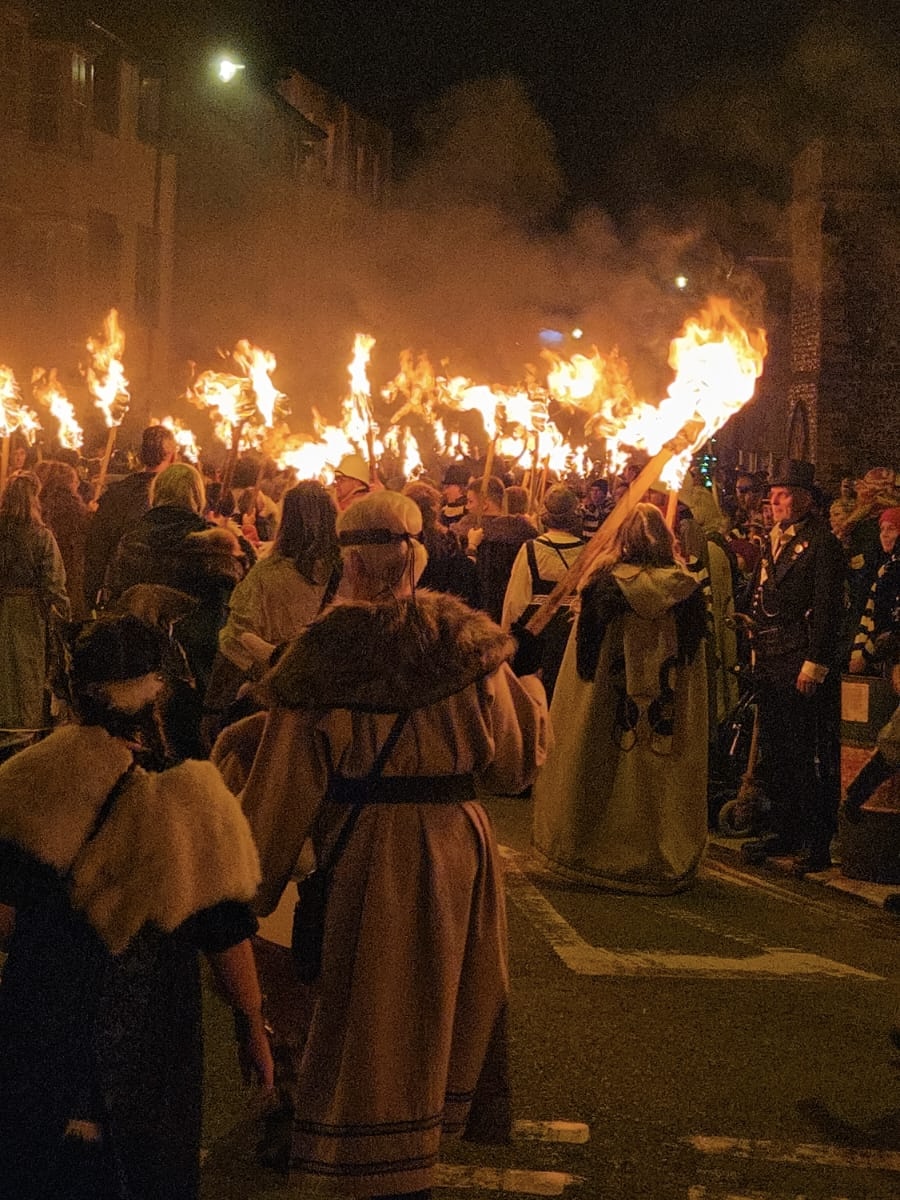To the east of Falmer lies the charming town of Lewes. Dating back to the 6th century, Lewes is steeped in history and is famous for its Bonfire Night, held annually on the 5th of November. The Bonfire celebration can be traced back to the mid-16th century, during a time of religious turmoil at the hands of Tudor monarchs. In 1555, Mary I intended to restore Catholicism to England, but 17 prominent individuals from Sussex refused to convert.
They were burnt at the stake in June 1557, in what is now Lewes Town Hall, and later honoured as the ‘Lewes martyrs.’ Religious tensions persisted during this period, ultimately leading to the Gunpowder Plot, which famously took place on 5 November 1605. The failed plot was an attempted regicide (through explosions stored under Parliament), towards Protestant King James I, led by English Catholics, including Guy Fawkes. Particularly for Sussex, the plot was reminiscent of the 17 martyrs, where both events used similar methods as an attempt to restore Catholicism.
The celebration of the failure of the Gunpowder plot and the commemoration of the martyrs has existed throughout Sussex for over 400 years. It was first in the form of random riots, banned during Oliver Cromwell’s reign, but soon allowed by Charles II. Forms of celebration continued, and in the mid-19th century, riots became increasingly violent and often involved police suppression.
The first bonfire societies (Lewes Borough and Cliffe) were formed in 1853 by the ‘Bonfire Boys’, with many other Sussex towns following suit later in the century. From here, bonfire celebrations are similar to the ones we recognise today. With its spectacular fire displays and processions (as well as its strict safety regulations), the small town of Lewes attracts over 70,000 visitors during festivities. The bonfire also attracts media attention for burning caricatures of present-day controversial figures. Despite its origins, Lewes bonfire is more about bringing its community together and continuing this historical legacy.
Despite its bonfire-related fame, Lewes is enjoyable all year round. The direct train to Lewes from Falmer Station is a 10-minute journey. I would recommend embracing what Lewes is best known for (its history), including its distinctly Norman castle, offering stunning views of the Sussex Downs from the top of its turrets. Or, Anne of Cleve’s house, her Tudor home turned museum, which allows you to envision what 16th-century life was like through interactive exhibits. Both are £4-5 student entry and are worth visiting.
You can also explore the many shops, particularly Lewes Flea Market, situated in a former Chapel that displays antiques from various time periods and cultures. There are also many pubs, where you can sample the local beer, brewed by Harvey’s of Lewes. Lewes further offers beautiful scenery, such as Priory Park, the site of a former monastery, situated in the centre of the town. If you like outdoor swimming, Pells Pool is the oldest freshwater pool in England. It’s worth checking out its schedule on the website first, but it offers swimming sessions all year round, both during the day and at night! Overall, Lewes is a nice, quaint town with lots of history, and is worth visiting during your time at the University of Sussex.
Another article you may enjoy: https://thebadgeronline.com/2025/11/pour-out-a-pint-for-the-residents-of-northfield/

